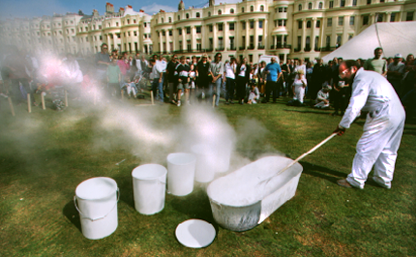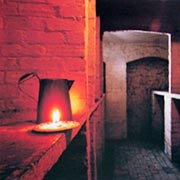Lime
‘Almost all historic buildings rely on the ability to breathe in order to survive, and any interference by way of an impervious membrane could, at best, be harmful, and at worst, disastrous.’
- Bob Bennett, The Lime Centre
Historically, lime has been the principal binding agent in mortars, plasters, renders and washes. Prior to the development of modern cements during the early nineteenth century, almost every structure was built using some or all of these lime-based products.

Above: Making lime mortar
Lime mortar, with its weak bond, allows a building to accomodate structural movement. Lime render and wash, unlike modern cement and paint, permit a building to breathe; that is to say, they permit moisture to penetrate and evaporate from the walls.
The Society for the Protection of Ancient Buildings (SPAB), English Heritage, the Royal Institute of Chartered Surveyors (RICS), and other architectural organisaitons are now recognising the need to utilise traditional lime products in the renovation of historic buildings.
If you are interested in further reading on this topic, these links will provide you with more information:
Singleton Birch Natural Hydraulic Lime



